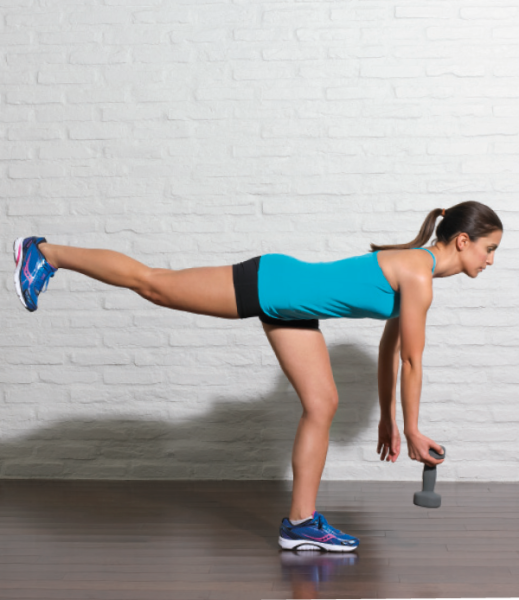5 Moves To Prevent Injury
Long runs, hill repeats, and intervals make your body strong. But to propel you forward, it relies heavily on a few specific muscles that can become so mighty that they overpower lesser-worked areas like your glutes, back, and certain muscles in your shins and quads. – By Jessica Girdwain
This imbalance can put stress on joints, ligaments, and the muscles themselves, says Dr Kevin Vincent, PhD, a sports clinic director. Strengthening weaker supporting players keeps muscle groups working in complementary fashion so you can perform your best and ward off injury.
These exercises target common imbalances: perform the sequence two or three days a week, on cross-training or easy run days.
Bonus: do them barefoot to give the stabilising muscles in your feet and ankles an extra challenge.
Heel Taps
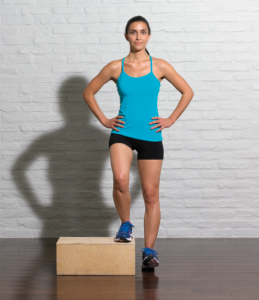 Works the tibialis posterior, a muscle in the shin that is often weaker than its counterpart, the anterior tibialis, also in the shin.
Works the tibialis posterior, a muscle in the shin that is often weaker than its counterpart, the anterior tibialis, also in the shin.
To do:
- Stand tall, with your right foot on a stair or step, with the inside of your foot along the edge of the step.
- Let your left foot hang off the step.
- Bend your right knee to tap your left heel on the ground (shown below).
- Return to standing.
- Do one to three sets of 10 reps on each side.
Single-leg Deadlift
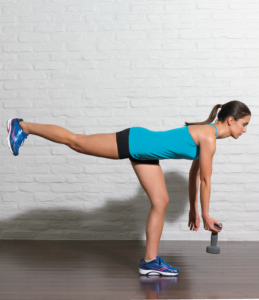 Activates the glutes and the piriformis, common runner weak spots that can be overpowered by stronger quads or hamstrings.
Activates the glutes and the piriformis, common runner weak spots that can be overpowered by stronger quads or hamstrings.
To do:
- Hold a light dumbbell (one to four kilos) in your right hand.
- Balance on your left foot, keeping your knee bent slightly.
- Bend forward from your hips so your right leg lifts behind you.
- Tap the weight on the floor.
- Return to the starting position.
- Do one to three sets of 10 reps on each leg.
Walking Lunge With Twist
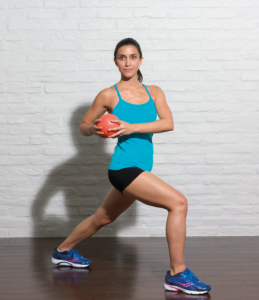 Strengthens the entire length of the quad – the lower portion of the thigh above the kneecap tends to be weaker than the top portion.
Strengthens the entire length of the quad – the lower portion of the thigh above the kneecap tends to be weaker than the top portion.
To do:
- While holding a medicine ball, step forward and drop down so your front knee flexes 30-50° (work up to 90°).
- Twist right, left, then raise the ball overhead.
- Bring it back to centre, then repeat on your other leg.
- Alternate legs for 20 to 24 steps.
- Do two sets.
One-legged Bridge
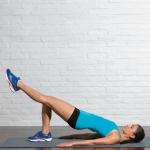 Targets under-worked muscles in your lower back, which oppose stronger abs, to create balanced core strength to power your runs.
Targets under-worked muscles in your lower back, which oppose stronger abs, to create balanced core strength to power your runs.
To do:
- Lie on your back with your knees bent and feet flat on the floor.
- Raise your pelvis up.
- Extend your left leg out and hold for 30 seconds.
- Release your leg back down.
- Then extend your right leg and hold for 30 seconds.
- Lower your leg and then lower your pelvis.
- Repeat two more times.
Seated Row
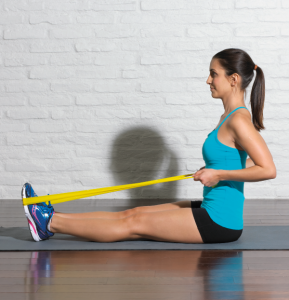 Builds your upper back, to counteract stronger chest muscles and help you maintain good running posture.
Builds your upper back, to counteract stronger chest muscles and help you maintain good running posture.
To do:
- Sit with legs extended and a resistance band looped around your feet.
- Hold each end of the band with your arms extended straight out.
- Pull the band toward you, focusing on ‘pinching’ your shoulder blades together.
- Release.
- Do one to three sets of 10 reps.
Diagnose your injury with the Injury Tool here >>



